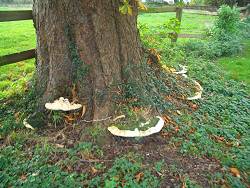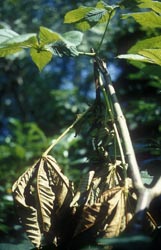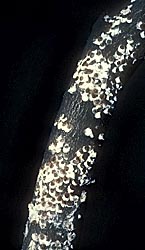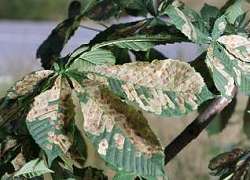Horse chestnut trees (Aesculus hippocastanum) are susceptible to several well-known pests and pathogens that cause symptoms other than bleeding canker.
Caused by the fungus Guignardia aesculi, the disease produces reddish or dull brown, irregular blotches that are often concentrated at the tips and margins of infected leaflets. The blotches are often outlined by a conspicuous yellow band (see the photo). Occasional browning without the yellow margin may be caused by ‘xylem limited’ bacteria.
Wood rotting fungi, such as Ganoderma and Armillaria frequently cause decay on mature trees.

Scattered dead and drooping shoots on horse chestnut trees usually indicates damage by squirrels.

Circular white spots visible on trunks or large branches (and sometimes mistaken for pigeon droppings) are actually the insect Pulvinaria regalis. This pest is mainly found disfiguring trees in urban localities.

Cameraria ohridella is a leaf mining moth that attacks the leaves of horse chestnut. Please read our leaf miner resource pages about this pest to find out more.
